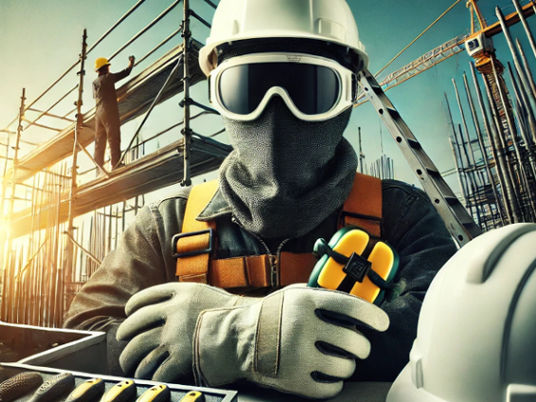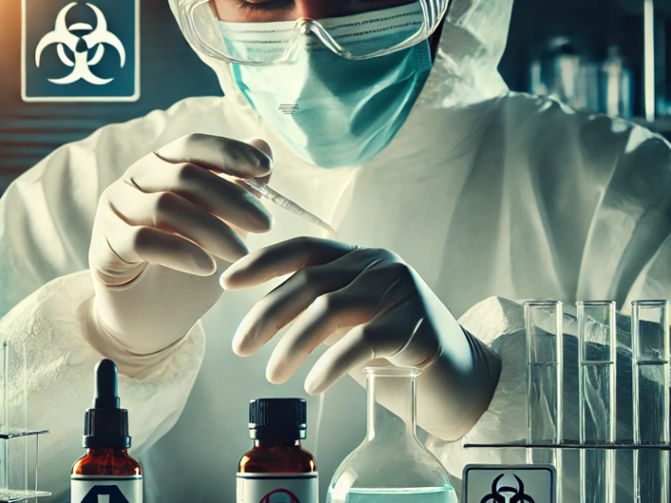When it comes to personal safety, having the right gear is essential. Whether working in construction, handling chemicals, or riding a motorcycle, correctly choosing and using safety gear can be the difference between staying safe and getting hurt. This guide will walk you through how to select and use safety equipment confidently, ensuring maximum protection.
Importance of Safety Gear
Safety gear is essential because it helps protect you from dangers, which lowers the chances of getting hurt and can save lives. Think about a construction worker climbing a tall building without a helmet or a cyclist riding on busy streets without a reflective vest. The dangers are huge.
The UK’s Health and Safety Executive (HSE) says that using the right personal protective equipment (PPE) can stop more than 60% of injuries at work. In addition to personal safety, appropriate gear is sometimes a legal necessity in various industries to be able to fulfill the requirements of occupational health standards.
Identifying Hazards
The first step in choosing safety gear is to identify the hazards you might encounter. Risks vary depending on the environment and activity. You may be exposed to falling objects or sharp tools. You may encounter heavy machines as well. This may also result in chemical risks, such as coming into contact with harmful substances and spills.
This includes biological dangers, such as germs and viruses that bring about infections. Environmental factors would include very hot or cold temperatures, low visibility, or deafening sounds, among others.
Once you know the possible dangers, you will understand what protective gear you need. For example, think about a factory worker dealing with harmful chemicals. Without the right gloves and goggles, a spill could cause serious burns or damage to their eyes. Knowing this risk helps them use gloves that resist chemicals and goggles that protect against splashes, which follow safety rules.
Complying with Safety Standards
In the UK, safety gear must comply with specific regulations. Look for certifications that indicate the equipment meets these standards, such as CE Marking, which ensures compliance with European safety requirements, and BSI (British Standards Institution) certifications that indicate adherence to UK-specific standards. For instance, construction helmets must comply with BS EN 397, while respiratory masks should meet FFP2 or FFP3 standards to filter harmful particles effectively. Using certified safety equipment not only protects you but also ensures legal compliance.

Choosing the Right Safety Gear
Picking the right safety gear depends on the specific dangers you have. For head protection, hard hats protect against falling objects and bumps. Look for things like adjustable straps and sweatbands for comfort, making sure they follow EN 397 standards. Eye and face protection: Safety goggles guard against flying debris and chemical splashes.
In welding the face shield or auto-darkening helmet is indispensable. Anti-fog and scratch-resistant coatings are provided to improve usability. Hearing protection is earplugs or earmuffs for loud environments; make sure to check the NRR rating. In areas with dust or chemicals, respiratory protection, like respirators, is essential. Select filters that have FFP3 standards for the highest level of particle filtering.
Hand protection varies with the task; cut-resistant gloves are good for sharp objects, and chemical-resistant gloves are necessary for working with dangerous substances. Ensure they fit well so you can still move your hands freely. High-visibility jackets are important in dark places or busy areas, and flame-resistant clothes are important for people working near fire or heat.
Foot protection requires steel-toe boots to protect from falling things and slip-resistant soles to help stop slips in wet or greasy places.
Ensuring Proper Fit
Safety gear must fit well to offer maximum protection. Ill-fitting gear can lead to discomfort and decrease its effectiveness. Look for adjustable features like straps, buckles, or laces that allow customization, and always measure and choose the correct size for helmets, gloves, and boots. Choose breathable materials or padded options to encourage consistent use. Many people buy safety gear without trying it on, which often leads to discomfort or improper fit. Always test the equipment before purchasing.
Training and Maintenance
Owning safety gear isn’t enough; knowing how to use it is equally important. Comprehensive training ensures you’re fully protected. Learn how to correctly wear and remove safety gear to avoid contamination or damage. Understand cleaning and storage routines for each item, and know when to replace gear, such as spotting cracks in helmets or tears in gloves.
Regular maintenance is essential to keep safety equipment effective. Wipe down gear after every use, especially if exposed to dirt, chemicals, or sweat. Check for signs of wear and tear, such as frayed straps or damaged lenses, and discard any compromised gear immediately. Most equipment has an expiration date, so keep track. Creating a maintenance log to track inspections and replacements helps ensure nothing is overlooked.
Building a Culture of Safety
Safety isn’t just about equipment; it is a state of mind. Encourage a safety-first culture by rewarding good behavior. Leaders and managers should always be dressed in the right personal protective equipment. Acknowledge the employees who continuously adhere to the safety procedures and provide a mechanism for the workforce to identify hazards or faulty equipment without fear. For instance, John, the supervisor of the warehouse, insisted on wearing his bright jacket. His team followed suit, and in two years, there were no safety violations. This small act of leadership improved overall safety compliance.
methods like recycled materials, energy-efficient appliances, and robust, long-lasting furniture.

Real-Life Lessons
Sarah, a lab technician, once skipped wearing gloves while handling chemicals. A minor spill resulted in a severe skin reaction, causing weeks of pain and expensive medical bills. After this incident, she invested in high-quality chemical-resistant gloves and educated her colleagues about the importance of PPE. Her story is a stark reminder of the consequences of neglecting safety gear.
Conclusion
Choosing and using the right safety gear is a critical step toward protecting yourself and others. By assessing risks, understanding regulations, and ensuring proper fit and maintenance, you can significantly reduce the likelihood of injuries. Safety gear is an investment in your well-being. Don’t cut corners or settle for subpar equipment. Equip yourself with confidence and face your tasks knowing you’re well-protected.